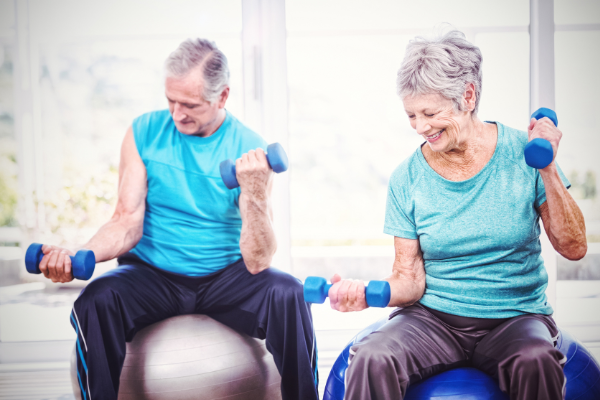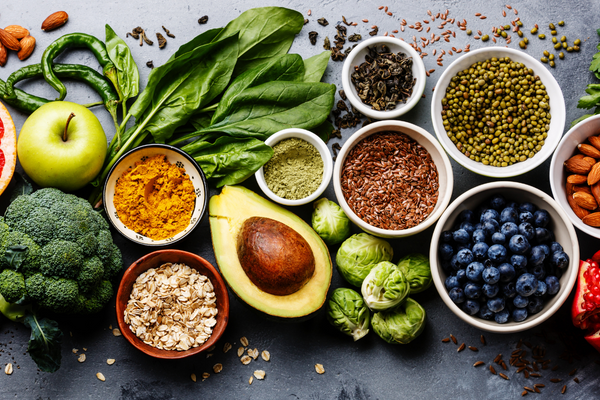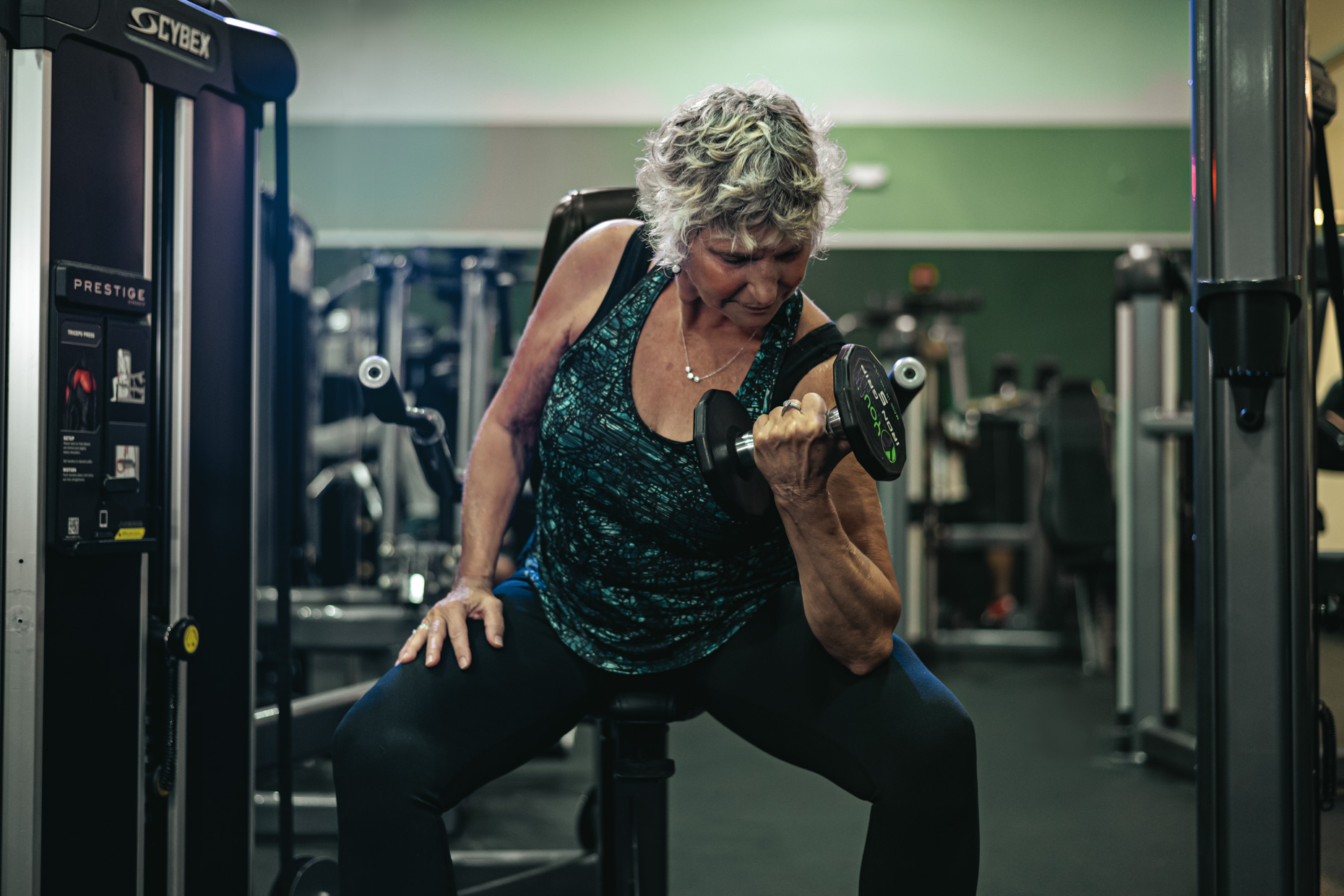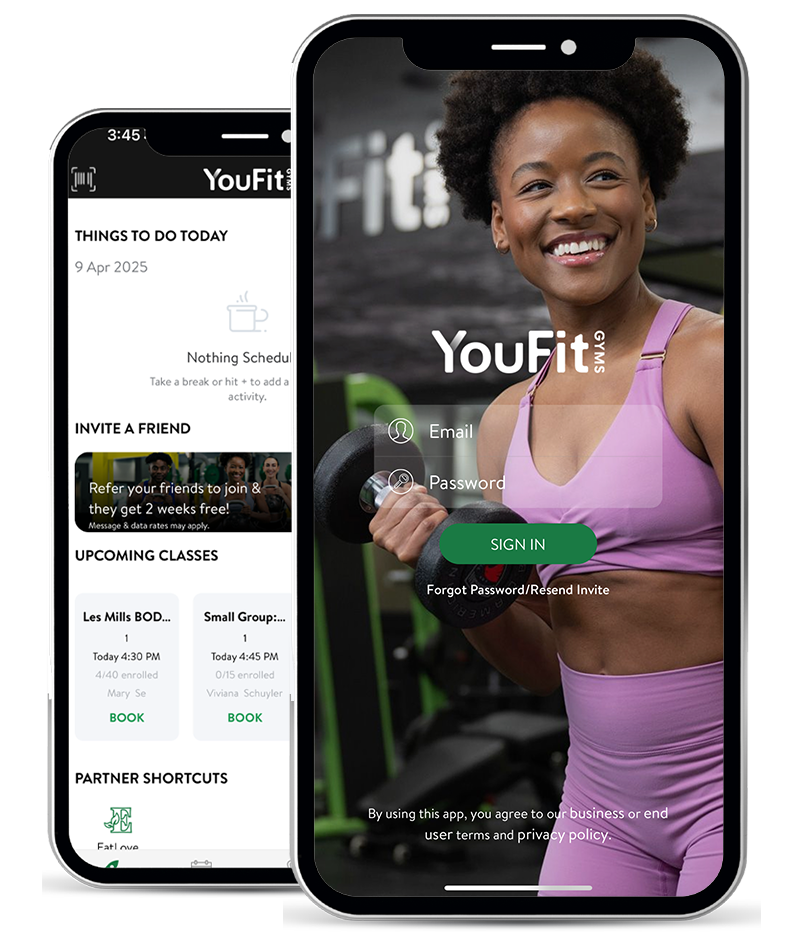Robert stared at the invitation taped to his refrigerator. A picture of his smiling granddaughter, Sophie, beaming next to the words, “You’re invited to my 7th Birthday… at the Rock Climbing Gym!” His heart sank just a little. It wasn’t the height that scared him; it was the getting up and down, the kneeling on the hard mats, the fear of his knee giving out or losing his balance in the crowd of excited kids. Just last week, a simple trip to the grocery store ended with a wobbly moment in the parking lot that left his heart pounding. He felt like his world was slowly shrinking, defined more by what he couldn’t do than what he could. The idea of being a spectator in his own life, especially in Sophie’s, was a future he refused to accept.
This feeling is a quiet reality for many of us as we move past 60. We begin to make small concessions—taking the elevator instead of the stairs, avoiding uneven sidewalks, turning down invitations that seem too physically demanding. We call it “slowing down,” but often it’s a slow retreat from a full, vibrant life. What if we could reframe this chapter? What if we stopped thinking about “slowing down” and started thinking about “training smart”? What if we viewed ourselves not as seniors, but as senior athletes—training for the most important sport of all: the sport of life?
At YouFit, we believe that your age is not a barrier but a badge of honor. Your body has a lifetime of experience, and with the right approach, it also has a lifetime of potential. The YouFit Senior Athlete Program is designed to unlock that potential, focusing on building strength, enhancing stability, and boosting your bone density to not only prevent falls and injury but to empower you to say “Yes!” to every adventure life throws your way, whether it’s climbing a rock wall or simply carrying your groceries with confidence.
The Biology of Aging | The “Why” Behind the Workout
To train effectively, we need to understand what’s happening within our bodies. After age 50, several physiological processes accelerate, but the key word here is accelerate, not predetermine. With targeted exercise, we can significantly slow, and in some cases even reverse, these changes.
Sarcopenia (Muscle Decline)
This is the age-related loss of muscle mass and function. Beginning in our 30s, we can lose 3-5% of our muscle mass per decade if we are inactive. This loss has a cascade of effects: it slows down our metabolism (making weight management harder), reduces our physical strength for everyday tasks like opening a jar or getting out of a chair, and diminishes our body’s largest reservoir for storing glucose, which can impact blood sugar regulation. Resistance training is the single most effective weapon against sarcopenia. It sends a powerful signal to your body to not just maintain, but to build new, healthy muscle tissue.
Osteoporosis
Our bones are living tissue, constantly being broken down and rebuilt. As we age, especially for post-menopausal women, the rate of bone breakdown can exceed the rate of rebuilding, leading to osteopenia (low bone mass) and eventually osteoporosis, where bones become brittle and highly susceptible to fractures. The antidote is mechanical loading. Strength training places targeted stress on your bones. This stress signals specialized cells called osteoblasts to wake up and start building new bone matrix, effectively increasing your bone mineral density and making your skeleton more resilient.
Proprioceptive Decline
Proprioception is your body’s sixth sense. It’s the intricate communication between your brain and nerve endings in your muscles and joints that tells you where your body is in space without you having to look. It’s what allows you to walk without staring at your feet. As we age, this system can become less efficient, leading to a delayed reaction time. A small stumble that you would have effortlessly corrected at 30 might lead to a fall at 70 because the signal to re-stabilize is just a fraction of a second too slow. Balance and stability exercises directly train this neuromuscular system, sharpening its response time and effectively “tuning up” your body’s internal GPS.
The YouFit Senior Athlete Program is built to combat these three processes directly, creating a body that is not just living longer, but living stronger.
Are you ready to stop retreating and start training for the life you want to live? The journey begins with a single step into a supportive environment. Discover our community and facilities at YouFit Gyms. Click here to claim your complimentary three-day pass!
The Three Pillars of the Senior Athlete Program
Our program is built on three interconnected pillars that work together to create a robust, stable, and functional body. We recommend incorporating exercises from each pillar into your weekly routine.
Pillar 1: Building a Foundation of Stability
Before we can build strength, we must be stable. These exercises are designed to improve your balance, sharpen your proprioception, and strengthen your core to create a solid base of support.
The Single-Leg Stance
This is the cornerstone of balance training. Stand next to a sturdy chair or wall for support. Shift your weight onto one foot and slowly lift the other foot an inch or two off the floor. Try to hold this for 10 seconds, focusing on a spot on the wall in front of you. The goal is not perfect stillness; you will feel your ankle making dozens of tiny adjustments. This is your proprioceptive system in action, retraining itself to respond quickly. As you get more confident, aim for 30 seconds. You can progress by lifting your foot higher, closing your eyes for a few seconds, or standing on a slightly unstable surface like a foam pad.
Tandem Walk (Heel-to-Toe)
This exercise challenges your balance in motion, mimicking the challenge of walking on uneven ground. Stand near a wall for support. Place one foot directly in front of the other, so the heel of your front foot is touching the toes of your back foot. Take 10 slow, deliberate steps forward, keeping your gaze up and your core engaged. This movement narrows your base of support, forcing your core and hip stabilizers to work harder to keep you upright. Then, try walking backward to the starting point.
Seated Torso Twists
A mobile spine and strong core are essential for balance and preventing back pain. Sit tall on a sturdy chair with your feet flat on the floor. Cross your arms over your chest. Without moving your hips, slowly and gently twist your upper body to the right, feeling a stretch in your back and obliques. Hold for a deep breath, then return to the center and twist to the left. This not only improves spinal mobility but also strengthens the deep core muscles that act as a natural corset, stabilizing your trunk during all movements.
Pillar 2: Forging Resilient Strength
This is where we build the muscle and bone that will power your life after sixty — and protect you from injury. Focus on slow, controlled movements with perfect form.
The Sit-to-Stand (Goblet Squat)
This is arguably the most functional exercise you can do, as it trains the exact movement of getting out of a chair. Stand in front of a sturdy, armless chair with your feet shoulder-width apart. With your chest up and core engaged, send your hips back and slowly lower yourself until you are just an inch from the seat, then press through your heels to stand back up. To make it harder, hold a light dumbbell or even a heavy book at your chest (this is a Goblet Squat). This exercise builds powerful legs and glutes and places healthy stress on the bones of your hips and spine.
Wall Push-ups
Upper body strength is crucial for pushing open heavy doors, lifting objects onto a shelf, or even pushing yourself up from a fall. Stand facing a wall, about arm’s length away. Place your palms flat on the wall, slightly wider than your shoulders. Keeping your body in a straight line from your head to your heels, bend your elbows and slowly lower your chest toward the wall. Press back to the starting position. This is a safe and effective way to build strength in the chest, shoulders, and triceps without putting stress on the wrists or shoulders.
Seated Rows
A strong back is the key to good posture and a pain-free life. It also helps balance out the pushing muscles worked in the wall push-up. Sit tall on a bench or chair. If you’re at the gym, use a cable row machine with a light weight; at home, you can use a resistance band wrapped around a sturdy anchor point. With your arms extended, pull the handle or band toward your chest, squeezing your shoulder blades together as if you’re trying to pinch a pencil between them. This strengthens the crucial muscles of your upper back, helping to pull your shoulders back and prevent that age-related forward slump.
Pillar 3: Enhancing Functional Movement
This pillar brings it all together, training your body for the specific demands of everyday life.
The Farmer’s Carry
Think about carrying heavy grocery bags from the car to the house. This is that movement, turned into a powerful exercise. Stand tall with a moderately heavy weight in each hand (dumbbells, kettlebells, or even two reusable grocery bags filled with books). With your shoulders back and down and your core braced, simply walk a set distance, like 50 feet. Turn around and walk back. This simple exercise builds tremendous grip strength (which is linked to longevity), core stability, and shoulder health.
Floor-to-Stand Practice
The ability to get up from the floor independently is a critical skill for maintaining independence and can be life-saving after a fall. Practice this in a safe, open area. Start by getting onto your hands and knees. From there, bring one foot forward, placing it flat on the floor so you are in a half-kneeling or lunge position. Place your hands on your front thigh and push through your feet to a standing position. Practice getting down the same way. There are many ways to get up, and the “right” way is whatever way works safely for you. Practicing this regularly builds confidence and coordination.
Your Weekly Game Plan: The Senior Athlete Schedule
Consistency is more important than intensity. Aim for 2-3 full-body strength and stability sessions per week on non-consecutive days to allow for recovery.
- Monday: Full Body Session 1
- Warm-up (5 mins): Light walking, arm circles, leg swings.
- Pillar 1: Tandem Walk (1 minute), Seated Torso Twists (10 per side).
- Pillar 2 & 3: Sit-to-Stands (2 sets of 10-12), Wall Push-ups (2 sets of 8-10), Seated Rows (2 sets of 10-12), Farmer’s Carry (2 trips of 50 feet).
- Cool-down (5 mins): Gentle stretching for the chest, back, and legs.
- Tuesday: Active Recovery
- Light walk, stretching, or a yoga class.
- Wednesday: Full Body Session 2
- Warm-up (5 mins): As above.
- Pillar 1: Single-Leg Stance (2 sets of 30 seconds per leg).
- Pillar 2 & 3: Goblet Squats (2 sets of 8-10), Seated Rows (2 sets of 10-12), Wall Push-ups (2 sets of 8-10), Floor-to-Stand Practice (3-5 reps).
- Cool-down (5 mins): Gentle stretching.
- Thursday: Active Recovery
- Friday: Full Body Session 3 (Optional)
- Mix and match your favorite exercises from the week.
- Saturday/Sunday: Rest and Recreation
- Enjoy the fruits of your labor! Go for a hike, play with your grandkids, or go dancing.
The Ascent
Robert decided to act. He started slowly, practicing the sit-to-stand using his dining room chair. He held onto the kitchen counter while doing single-leg stances. He joined YouFit and, with the guidance of a friendly trainer, learned how to use the seated row machine. Two months later, he walked into that rock-climbing gym. He didn’t climb the wall, but he did something far more important. He knelt on the mats to help Sophie with her harness, he boosted her up for her first foothold, and he got up and down a dozen times without a second thought, his body strong and stable. He wasn’t on the sidelines — he was in the game! That day, Robert wasn’t just a grandfather. He was a senior athlete, and he was winning.
It’s time to invest in your future self. The strength and stability you build today are the independence and freedom you will enjoy tomorrow. Let us show you how. Join the YouFit community and start your Senior Athlete journey. Get your free 3-day pass today!
FAQ
What is the best exercise for seniors to improve balance?
The best exercises for seniors to improve balance are those that safely challenge their stability, such as the single-leg stance, tandem (heel-to-toe) walking, and tai chi, as these directly train the body’s proprioceptive system to react more quickly to prevent falls.
How can seniors increase bone density and strength?
Seniors can effectively increase bone density and strength through consistent resistance training that involves major muscle groups, such as squats (sit-to-stands) and rows, as this mechanical loading stimulates bone-building cells and promotes muscle growth.
What are the most important functional exercises for seniors?
The most important functional exercises for seniors mimic the movements of daily life to maintain independence, including the sit-to-stand (for getting out of chairs), farmer’s carries (for carrying groceries), and floor-to-stand practice (for getting up after a potential fall).
Is it ever too late to start strength training?
Absolutely not. Research has shown that individuals in their 80s and 90s can achieve significant gains in muscle mass and strength through resistance training. The body’s ability to adapt and build muscle is present at any age. The key is to start slowly, focus on impeccable form, and listen to your body. The benefits of starting, at any age, far outweigh the risks of inactivity.
What if I have arthritis or chronic joint pain?
This is a common and valid concern. The key is to work around the pain, not through it. In fact, strengthening the muscles around an arthritic joint is one of the best ways to reduce pain and improve function, as stronger muscles take stress off the joint itself. Start with a very light weight and focus on movements that don’t cause sharp pain. Water-based exercises can also be a fantastic, low-impact starting point. Always consult with your doctor or a physical therapist to find the best modifications for you.
How much is enough? Do I need to be in the gym for hours?
No, quality and consistency trump quantity. Two to three focused, 30-45 minute sessions per week are enough to see significant benefits. This includes a warm-up, your main exercises, and a cool-down. The most important thing is to make it a regular habit that you can stick with for the long term.
Is this program better than just walking or doing water aerobics?
Walking and water aerobics are fantastic for cardiovascular health and are great low-impact activities. However, they do not provide the specific type of mechanical loading required to significantly increase bone density and build muscle mass in the same way that resistance training does. A truly comprehensive fitness plan for seniors includes three components: cardiovascular exercise (like walking), flexibility/balance work, and, crucially, strength training. The YouFit Senior Athlete program provides that essential strength and stability component.









